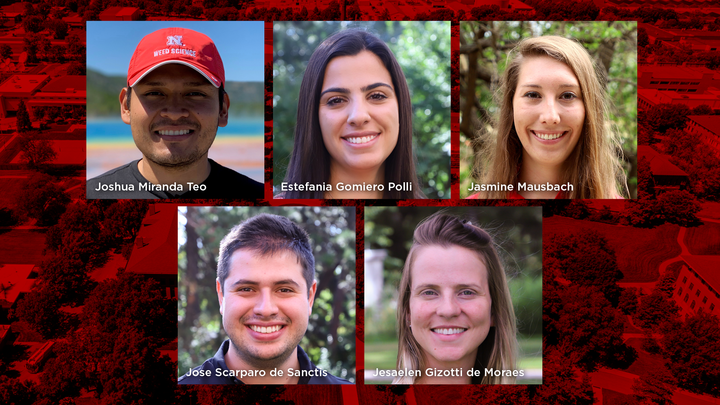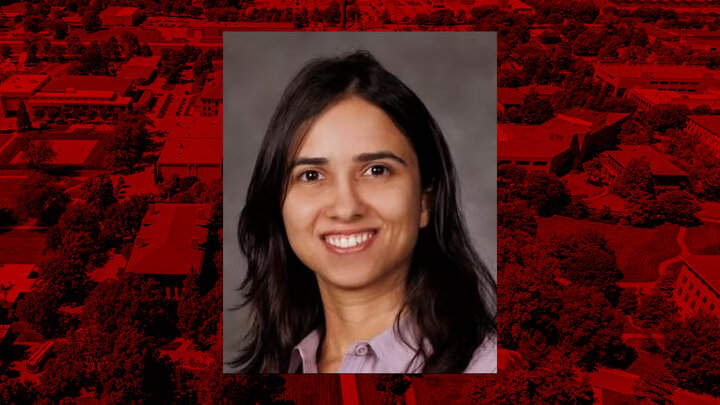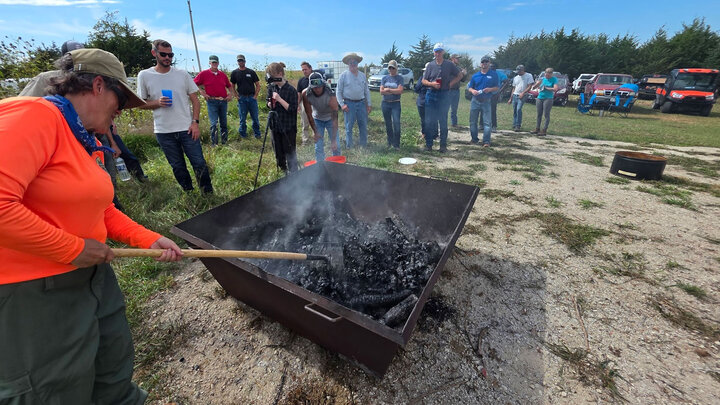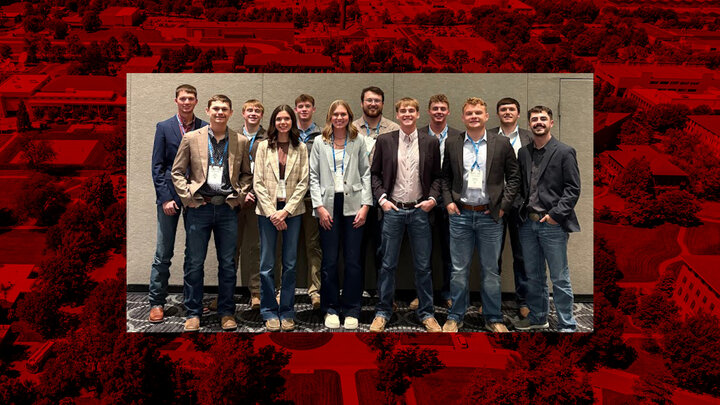Five University of Nebraska–Lincoln graduate students in agronomy and horticulture earned top honors in the Weed Science Society of America student poster and presentation contests held during the virtual 2021 annual meeting Feb. 15–19.
Joshua Miranda Teo received first place in Section 4 and Estefania Gomiero Polli took first in Section 1 of the M.S. Poster Contest. Jasmine Mausbach earned second place in Section 2 of the Three-Minute Thesis Research Communication Competition and Jose Scarparo de Sanctis and Jesaelen Gizotti de Moraes received second and third, respectively, in the Ph.D. Poster Contest.
The title of Miranda Teo’s poster was “Efficacy and Crop Safety of Dimethenamid-P, S-Metolachlor, and Pyroxasulfone for Management of ALS-Inhibitor-Resistant Palmer Amaranth (Amaranthus palmeri) in Dry Edible Bean.” He explained how Palmer amaranth has become prevalent in western Nebraska, where ALS-resistant biotypes are widespread in dry edible bean fields. Nebraska is the fourth largest dry, edible bean producer in the United States and currently there are no effective post-emergence herbicides registered for controlling ALS-resistant Palmer amaranth in dry edible beans. Thus, Miranda Teo tested three Group 15 herbicides in a pre-emergence application and sequential PRE/POST application programs to assess crop safety and ALS-resistant Palmer amaranth control. He potentially intends to provide data to expand their use labels in dry, edible beans.
Miranda Teo is working toward a Master of Science degree in agronomy, specializing in weed science and is advised by Nevin Lawrence, assistant professor in agronomy and horticulture and weed management specialist at the Panhandle Research and Extension Center, Scottsbluff.
Gomiero Polli’s poster title was “Interaction of Glyphosate and Dicamba Tank Mixtures on Glyphosate-resistant Horseweed and Barnyardgrass Control.” She explained how glyphosate and dicamba tank mixtures have been largely adopted for broad-spectrum weed control since the release of dicamba/glyphosate-resistant soybean on the market in 2017. However, previous research has shown antagonistic interactions between those two herbicides. This study was elaborated to further investigate the interaction of glyphosate and dicamba tank mixture combinations on glyphosate-resistant horseweed and barnyardgrass control. Results demonstrated antagonistic interaction between glyphosate and dicamba on GR horseweed control throughout most of the tank mixture combinations. Furthermore, for barnyardgrass, antagonistic interactions were consistently observed among the reduced glyphosate rates.
Gomiero Polli is working toward a Master of Science degree in agronomy, specializing in weed science and is advised by Greg Kruger, weed scientist and pesticide application technology specialist at the West Central Research and Extension Center, North Platte.
Mausbach’s three-minute presentation was titled “Evapotranspiration of Palmer Amaranth in Corn, Soybean, and Fallow Under Subsurface Drip and Center-pivot Irrigation Systems.” She talked about how within crop-weed interaction models, weed characteristics are unknown, which limits our understanding of weed growth and how it interacts with various crop growth parameters. She also spoke about field experiments that were conducted in 2019 and 2020 at the university’s South Central Agricultural Laboratory to determine the effect of center-pivot versus subsurface drip irrigation on the evapotranspiration of Palmer amaranth grown in corn, soybean, and fallow systems in south central Nebraska.
Mausbach is working toward a Master of Science degree in agronomy, specializing in weed science and is advised by Amit Jhala, associate professor of agronomy and horticulture and extension weed management specialist.
Scarparo de Sanctis’ poster title was “Evaluating Interaction of Dicamba, Fluthiacet-methyl, and/or Glyphosate for Control of Velvetleaf in Dicamba/Glyphosate-resistant Soybean.” In the poster, Scarparo de Sanctis explains how velvetleaf is a weed commonly found throughout Nebraska’s agronomic fields. Dicamba applied alone does not provide satisfactory control of velvetleaf; therefore, the objective of his study was to investigate dicamba, fluthiacet-methyl, and glyphosate interactions on velvetleaf control at maximum and minimum label rate and at two velvetleaf heights in dicamba/glyphosate-resistant soybean. Results demonstrated that fluthiacet-methyl alone or in tank-mix with other herbicides was highly effective on velvetleaf control. Further, Colby correlation analysis demonstrated antagonistic interaction between observed and estimated control of dicamba plus glyphosate tank mix.
Scarparo de Sanctis earned a Master of Science degree in December from Nebraska and was advised by Jhala. He is currently working toward a doctorate in weed science at North Carolina State University.
Gizotti de Moraes’ poster title was “Will a Drift Reducing Adjuvant Impact the Weed Control in a XtendFlex Soybean?” Gizottie de Moraes explained how XtendFlex is the first technology with tolerance to dicamba, glyphosate, and glufosinate herbicides which will be an additional tool when managing tough-to-control and herbicide-resistant weeds. It is likely that a drift reducing adjuvant will be required for those applications, but no information can be found in literature on how DRAs and herbicides will interact when applied in combination as well as their effectiveness. The objective of this study was to evaluate the response of troublesome weeds to tank-mixtures containing two or more herbicide sites-of-action as affected by DRAs.
Gizotti de Moraes is working toward a doctorate in agronomy, specializing in weed science and is advised by Kruger.




